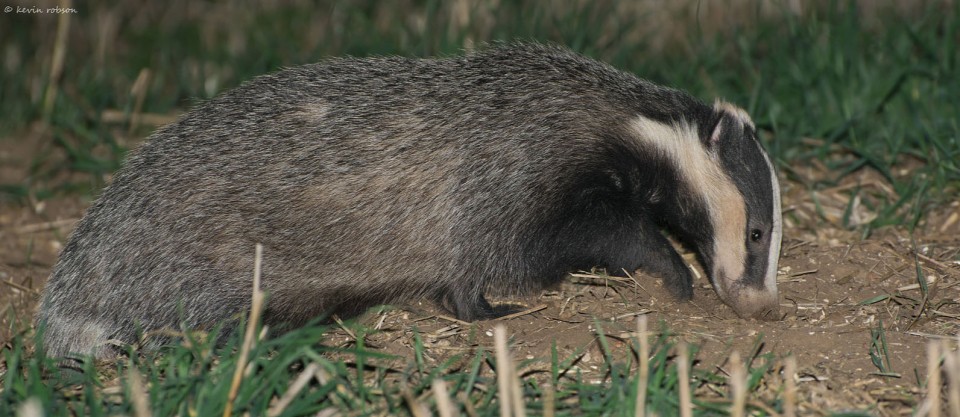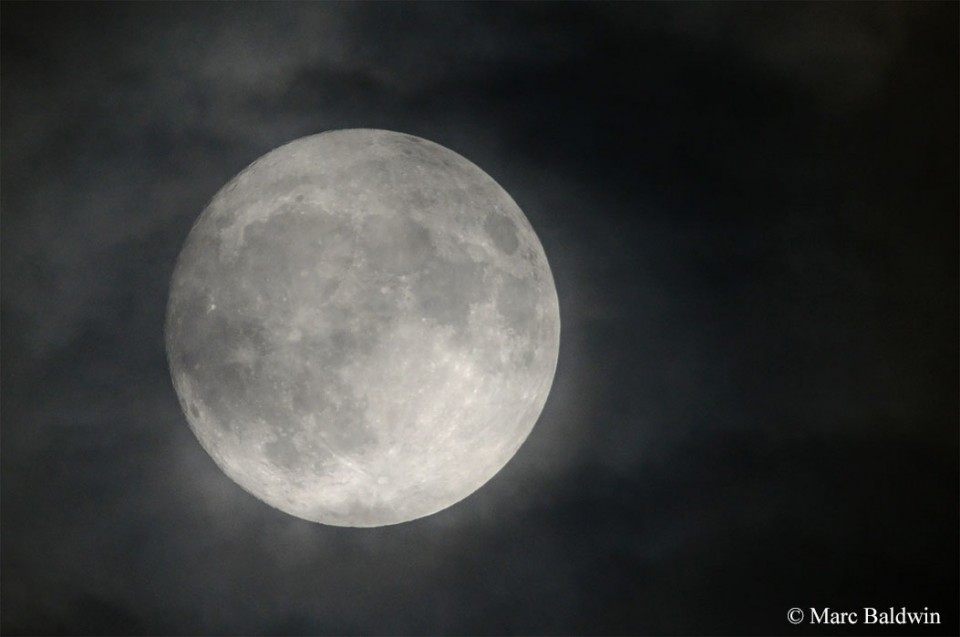European Badger Activity
Badgers are primarily crepuscular (i.e. active at dawn and dusk) or nocturnal, although they can be seen around during the daytime, particularly early in the morning and evening during summertime. Generally, here in the UK, badgers emerge from their setts before dusk between May and August and after dark for the rest of the year; they are also less active from November to February. Badgers do not truly hibernate, but may enter a state of torpor during very cold or snowy periods. During torpor, the badgers will remain in the sett, often for periods of several weeks, and metabolise fat reserves accumulated during the summer and autumn. There is usually a marked decrease in a badger's body temperature during the winter and early spring, being between 2C and 9C (3.6-16.2F) lower from November to April than it is from May onwards. This decrease in body temperature allows for greater "fuel economy" prolonging their fat reserves at a time when food is scarce or buried under snow. They don't typically seem to react to thunder or lightning, even at close range, although loud noises may startle them or prevent emergence under certain circumstances (see: Senses: Hearing).

During periods of exceptionally cold weather, badgers will often use a latrine inside the sett, rather than venturing outside. While activity is sporadic and unpredictable through the winter months, badgers may still venture out to forage, even in the snow. Post-winter emergence is generally late-February or early March, and by mid-summer badgers often spend time away from the sett during the day, even sleeping out in deep bedding piles. In more remote locations, young cubs may be seen playing outside during daylight and as they get older and begin exploring their clan's territory towards the end of May and beginning of June it is not uncommon to encounter them out even in the middle of the day in quieter spots - sometimes they'll walk right up to people, apparently curious about what they are. Periods of exceptionally dry weather may also result in adults out during the daytime searching for food and water.
Season has a profound impact on the activity pattern of badgers both at and away from the sett. Many badger watchers report customary increases in activity at the sett, particularly bedding collection and digging, during the late winter/early spring (in preparation for cubs) and autumn (in preparation for winter). Similarly, season affects ranging. A study by the University of Sussex, for example, found radio-collared badgers had largest ranges during the summer and autumn, with clan range declining during the winter months. A similar study published in the Journal of Animal Ecology during 2002 found that dominant females and subordinates used only a small fraction of their territories, moved short distances at low speed and covered small areas each night during the winter and spring. Males were observed to use the same proportion of their territories throughout the year, although they moved faster, over longer distances and covered greater areas per period of activity during the winter than females. As food availability (young rabbits in this study) increased in the autumn, so did body condition, although range was reduced; presumably a reflection that the badgers didn't need to move as far to find food.
A study published in the Journal of Biogeography found that the activity patterns of European badgers in Poland's Bialowieza Primeval Forest and other Palaearctic (from western Europe to Central Siberia) populations differed between spring and autumn and between adult and subadult individuals. On average, badgers were seen to emerge from setts at 19:00 and return to them at 03:42, with most activity seen between 20:00 and 03:00. The duration of activity was dependent on daily temperature and the badgers were inactive for an average of 96 days (about three months) each year. The study also found that in regions with warm climates, badgers were active throughout the year, with an associated change in overall body mass; in areas with bitter winters badgers increased their body mass two-fold from spring to autumn and underwent torpor for up to six months. The conclusion of the paper was that the primary factor regulating these differences in behaviour was a winter shortage of earthworms.
A similar study published in the journal Mammalia during 2005 reported on the activity rhythms and movement patterns of badgers in cork-oak woodland of southwest Portugal. The research, carried out by Luis Rosalino and Margarida Santos-Reis at the Universidare de Lisboa in Portugal in collaboration with Oxford University's David Macdonald, found that badgers typically emerged from the sett just after sunset and returned shortly before sunrise; overall, the badgers were active for an average of just over eight hours and travelled an average of just under four kilometres (three miles) per night. The biologists also report that there was no significant reduction in activity during the winter months and that these badgers showed a much lower site fidelity than their northern conspecifics; an observation that may be explained by larger territory sizes in Mediterranean habitats.

Badgers in setts situated in open areas may emerge later than those living in the cover of woodland and, in his short by engaging letter about the habits of badgers to The Countryman (subsequently published in The Countryman Animal Book in 1973), Arthur Jollands suggested the intriguing notion that some badgers may listen for certain sounds upon waking up and use them as cues for emergence "and become dependent on them, as we might on an alarm clock". Jollands cited three examples: badgers in the Meon Valley, Hampshire, consistently emerging only after the last train of the day had passed the sett at 21:18; ones at a sett in Elmbridge, Surrey, seemingly prompted to leave by the first evening hoot of the resident tawny owl; and badgers at a sett in Warnford, Hampshire, apparently taking the call of a male pheasant going to roost every night as the cue to commence nightly activities. This is an intriguing suggestion, but these could equally be coincidental occurrences. Regardless, Jollands and many other observers have attested to the predictability with which badgers at a particular sett seem to emerge.
In southwest Spain, territory use by badgers varied seasonally and between sexes. During the winter and spring, when food was abundant, sows tended to stay close to the sett and move very little. During the summer, by contrast, when food was scarcer and the sows had high energy demands owing to the raising of cubs, they covered the entire expanse of their territory looking for food. Boars displayed a different pattern of movement; covering a roughly equal proportion of their territory during all seasons, but moving faster, over greater distances and covering a larger area per period of activity in the winter. This pattern appeared to reflect males seeking mating opportunities and defending their mates from interlopers (mate guarding). During this period, dominant boars were observed to form closer relations with dominant sows than subordinate ones during periods of rest.
The phase of the moon has also been suggested to play an important role in regulating badger activity. The moon has long been thought to have a profound impact on the lives of plants and animals and, as long ago as the first century AD, the Roman natural philosopher Pliny advised farmers to pick fruit for market before the full moon, when it was at its best. There are also suggestions that lunar cycles affect human behaviour and even fertility (the word "lunacy" comes from the Latin luna, meaning moon), but we're lacking data to validate such theories at present. We do know, however, that the lunar cycle has a pronounced impact on some animals (especially fish and marine invertebrates) and plants (perhaps most notably certain vegetables).

In the case of the badger, opinions are mixed. In their Polish study, Rosalino and his colleagues found no evidence that moonlight had any significant impact on badger activity. In a fascinating, if heavily anecdotal, contribution to September 2005's BBC Wildlife Magazine, however, Plymouth Marine Laboratory biologist David Dixon presented his observations on badger activity and lunar phases. Dixon reported that dominant individuals in his study group of badgers in Plymouth scent-marked more often, mated more frequently (and for longer periods) and were more aggressive towards each other when the moon was new, and consequently nights at their darkest, than when it was full.
The actual mating events that Dixon recorded were clustered within the moon's last quarter, the lunar "dark phase" when only the left half of the moon is visible, implying that reproductive behaviour in badgers may be strongly influenced by the moon. Dixon suggests that mating during the darkest nights may reduce the risk of being noticed by a potential predator, especially given that mating durations may exceed an hour. Nonetheless, the Eurasian badger has no natural predators; only competitors in the shape of foxes and bears. Additionally, despite studying the behaviour of Wytham's badgers for many years, Oxford University mammologists Christina Buesching and Chris Newman have yet to find any evidence for lunar-mediated activity variation. Dixon and his coworkers published their data in the journal Acta Ethologica the following year and they certainly make interesting reading, although the standard error associated with the squat-marking observations indicate substantial variability.

The intrinsic activity rhythms of badgers are flexible and can be altered by human interference. A paper by a team led by Frank Tuyttens reported that anthropogenic (human-induced) control of badgers changed their natural circadian (daily) rhythm. Using infra-red video cameras, the researchers were able to demonstrate that badgers in a population subjected to lethal control by humans (shooting) emerged from their setts later in the evening than those from a nearby, undisturbed population. Similarly, during the quarantine period imposed by the UK government in response to the COVID-19 coronavirus pandemic in 2020, there were several reports of badgers visiting gardens earlier than before the lockdown, suggesting they may be able to respond rapidly to changes in human activity. (Dawn Scott at Keele University in Staffordshire is currently undertaking a research project to quantify the coronavirus pandemic's impact on British mammal behaviour.) Interestingly, though, some activities that we might expect to affect activity may not. During his detailed observations of a badger clan in west Yorkshire between 1968 and 1974, for example, Adrian Middleton noted how nearby fireworks did not appear to concern the badgers unduly and affected neither their time of emergence nor their activity around the sett. (See also: Badger senses)
Several studies on the effectiveness of lethal control on badgers and whether it was effective at limiting the spread of bovine TB suggest that the more disturbed a sett becomes, the more unstable the population gets. Thus, badgers at highly disturbed setts may be more likely to disperse in search of undisturbed pastures. Concerns have subsequently been raised that this so-called "perturbation effect" may actually serve to increase the spread of TB, although the jury is still very much out on this. See Badgers & TB for more info.
Several authors have suggested that old boars emerge from the sett later than younger members of the clan. Such behaviour was described by Middleton at his sett in Yorkshire, although only once a younger boar arrived at the sett and took up residence. The old boar became progressively more solitary; departing alone, while the younger animals frequently left the sett together.
Finally, badgers will swim if necessity demands it, but they don't seem particularly comfortable or stable in the water and don't appear to take to deep water readily. They can also pass through remarkably narrow gaps. In May 2013, a trailcam captured one determined adult badger squeezing through the 10.5cm (4 inch) gap between a gate and fence post at Bicton College in Devon.